During a recent trip to Oita for a relaxing hot spring visit, I stopped by African Safari.
Even though I live nearby, I only learned about this zoo recently after seeing it on TV. But once I visited, I realized—it was way beyond my expectations!
The highlight of the experience is undoubtedly the Jungle Bus, a caged vehicle that takes you through the safari, allowing you to hand-feed the animals.
Most zoos have designated “feeding times,” but typically, visitors only watch zookeepers feed the animals.
Here, you get to do the feeding yourself, making it an entirely different level of excitement.
You can toss meat into a lion’s open mouth, hand sweet potatoes to an elephant while feeling its breath on your face…
It’s an up-close encounter with wildlife, separated only by a steel cage, just a few dozen centimeters away.
Even knowing it’s safe, hearing a lion growl right in front of me was terrifying!
The park is located just 30–40 minutes by car from Beppu and Yufuin, Oita’s famous hot spring towns, making it an ideal stop during an onsen trip.
Explore the Safari Park with the Jungle Bus
Since I didn’t have a car, I took a local bus from Beppu Station to the safari. The ride takes about 50 minutes, costing 760 yen one-way.
However, buses are infrequent, and getting to/from onsen areas can be inconvenient. If possible, renting a car is recommended.
Upon arrival, the first thing that caught my eye was the animal-shaped Jungle Bus, surrounded by heavy steel bars.
It felt like stepping into a real-life Japari Park!
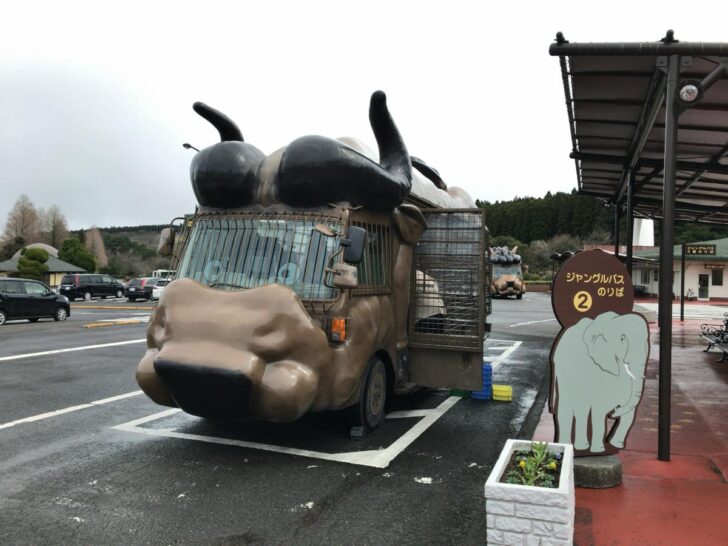
Unlike the fictional Japari Bus, which is open-air, riding an open vehicle here would be a death wish.
To ensure safety, the windows are reinforced with steel mesh and thick glass. That makes sense!

Admission to the park costs 2,500 yen, and the Jungle Bus ride is an additional 1,100 yen.
But trust me, it’s worth every yen—you cannot visit this safari without experiencing the Jungle Bus!
(*Prices as of 2017)
Since it was a weekday, I got on without much waiting. However, on busy days, it can be fully booked, so making a reservation in advance is recommended.
(→ Jungle Bus Reservation Page)
Once seated, we were handed a tray of food.
– Green pellets: Zebras & deer
– Sweet potatoes: Elephants
– Cookies: Bears
– Raw meat: Lions
– Mandarins: Giraffes
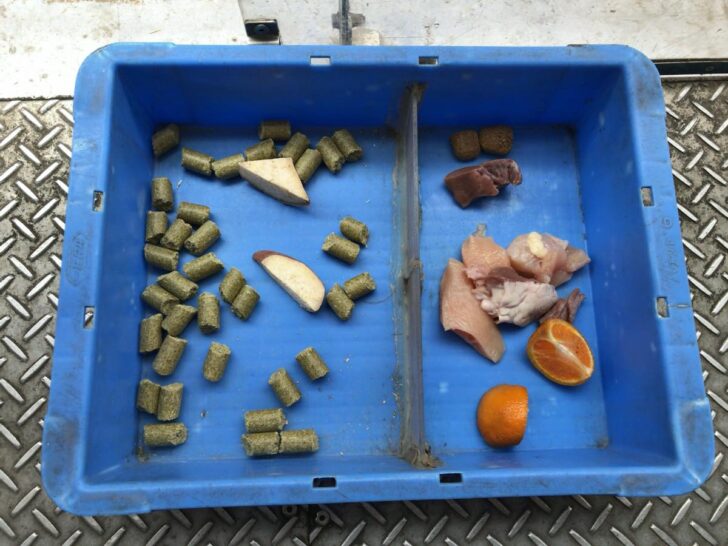
A staff member gave us important safety instructions before departure.
The number one rule—never stick your fingers through the bars.
Obviously, if an animal bites you, the park won’t take responsibility!
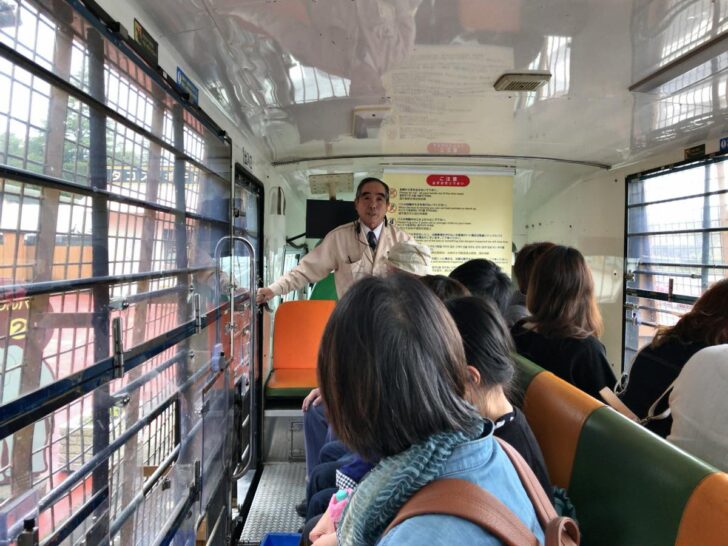
The bus is securely covered in steel mesh and reinforced glass, but some sections can be opened for feeding the animals.
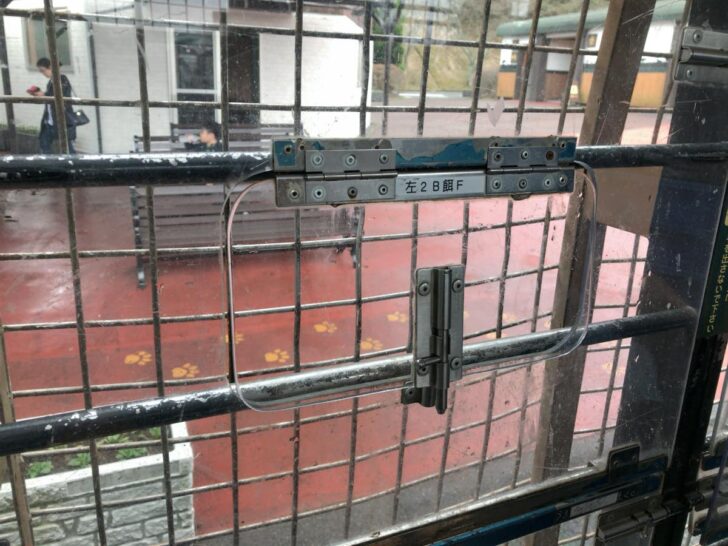
Unforgettable Animal Encounters – Unlike Any Zoo Experience!
As the Jungle Bus drove deeper into the safari, goats appeared almost immediately!
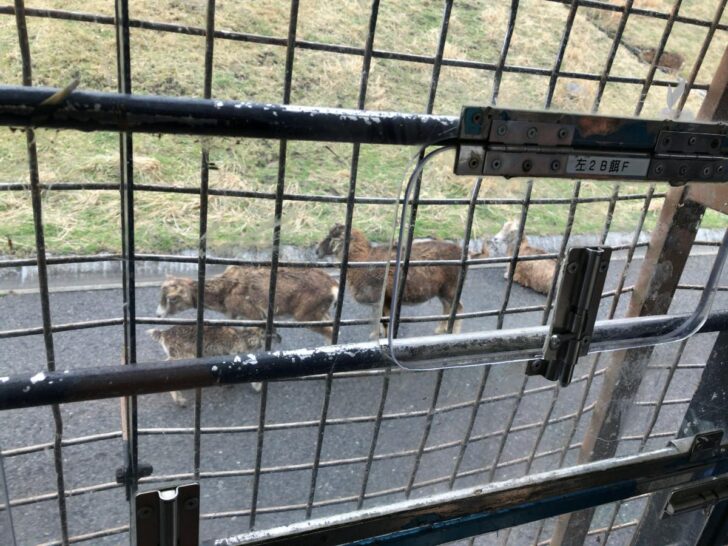
The guide called out, “Come onnnnn!”, and like clockwork, the goats (actually Barbary sheep and Mouflon) swarmed toward the bus.
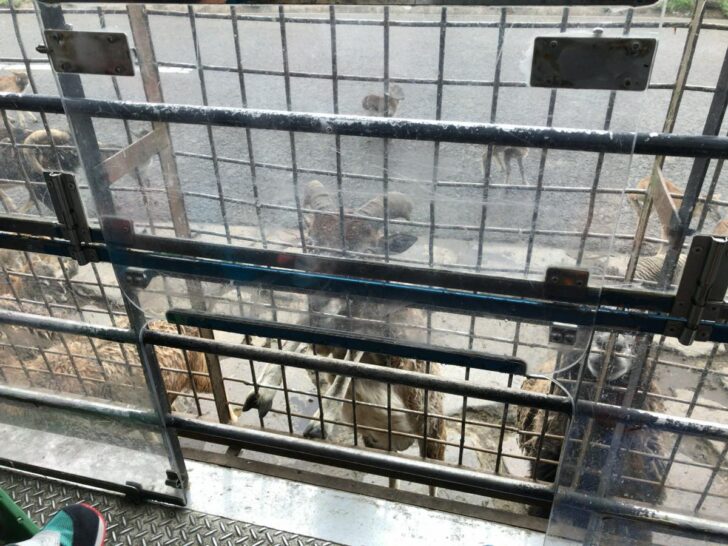
Using tongs, we fed them directly—feeling their bite through the metal was surreal!

Also, look at those adorable eyes! 🥹
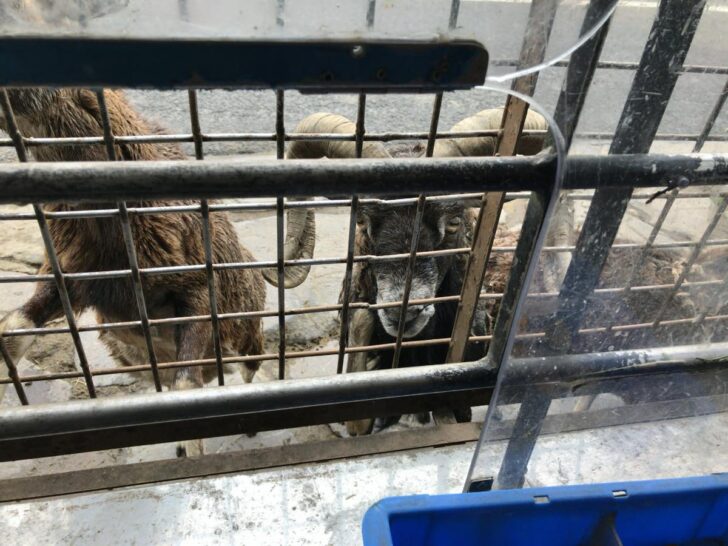
Moving on, we met Charlie, the American black bear.
If I saw him in the wild, I’d be terrified, but behind the mesh, he just looked… cute? (But still a little scary.)
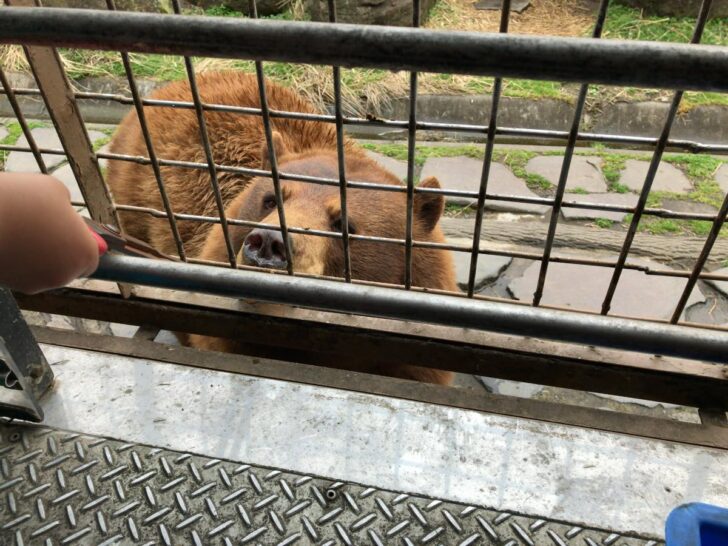
Then came the lion zone. One lion, in particular, was *way too close*.
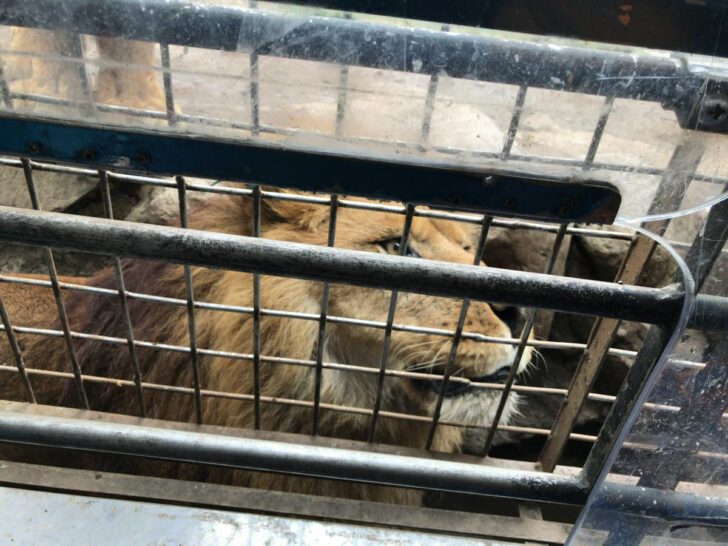
As I held out the raw chicken, he growled softly, then suddenly opened his mouth wide! The sheer power was breathtaking.
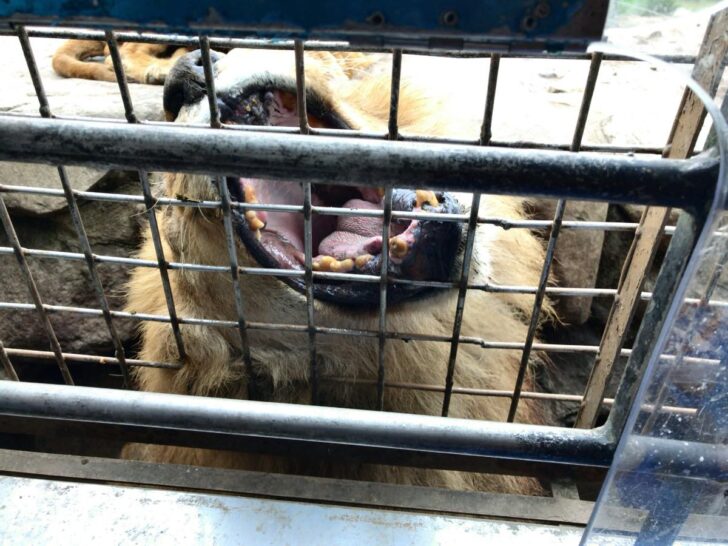
I dropped the meat in… GULP.
Seeing a lion up close was even more intense than I imagined.
At one point, two lions fought right next to the bus, growling loudly.
People inside screamed, and I thought, “This is something you’d NEVER experience at a regular zoo.”
The next encounter was with a majestic fallow deer with impressive antlers.
(Note: Since I was using only my iPhone and was busy feeding and interacting with the animals, I couldn’t take many high-quality photos—please forgive me!)
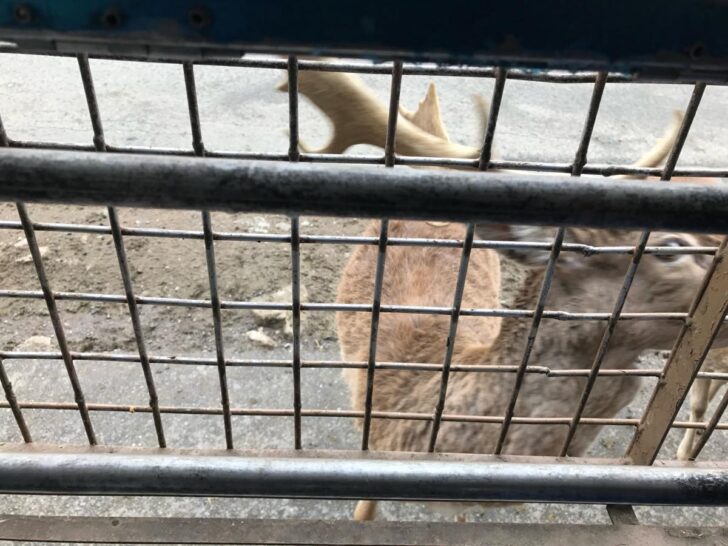
The American bison and white rhinoceros were either eating or napping, so they didn’t come closer.
Still, they were incredibly massive, even from a distance.
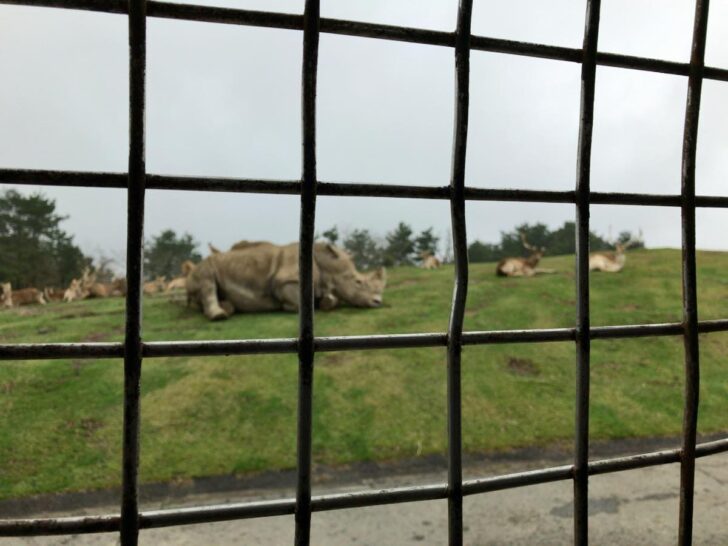
And finally, the Asian elephant!
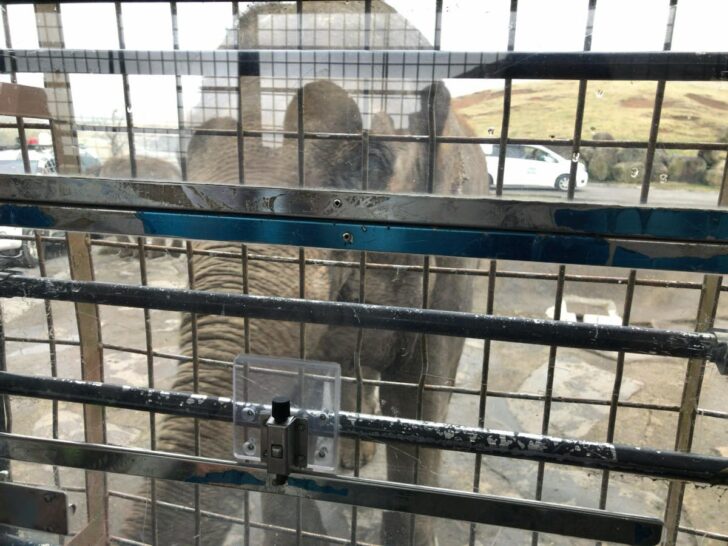
It stretched its long trunk toward us, eagerly begging for food.
If you place food near the tip, it skillfully curls its trunk to bring the snack to its mouth.
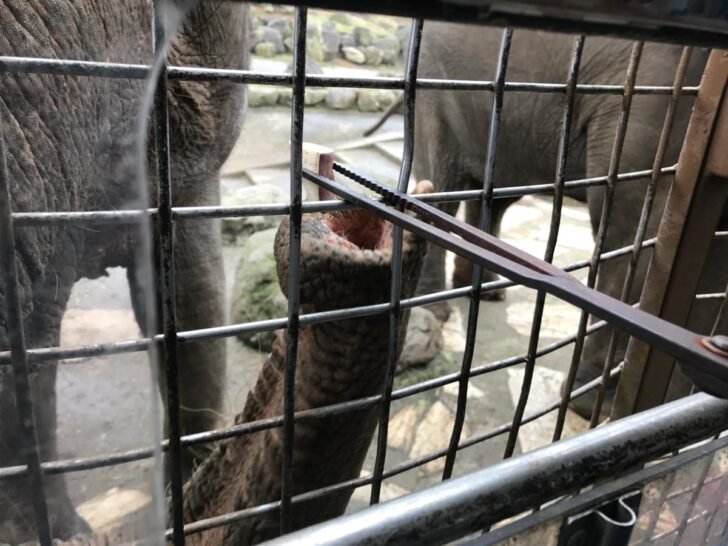
However, be warned about the elephant’s sneezes!
Occasionally, they let out a powerful blast of air from their trunk—and yes, sometimes it includes snot. Watch out! 😂
Next up, the giraffe.
It bent its long neck all the way down to get closer to us.
Despite its massive body, its legs were incredibly thin—how does it even balance?
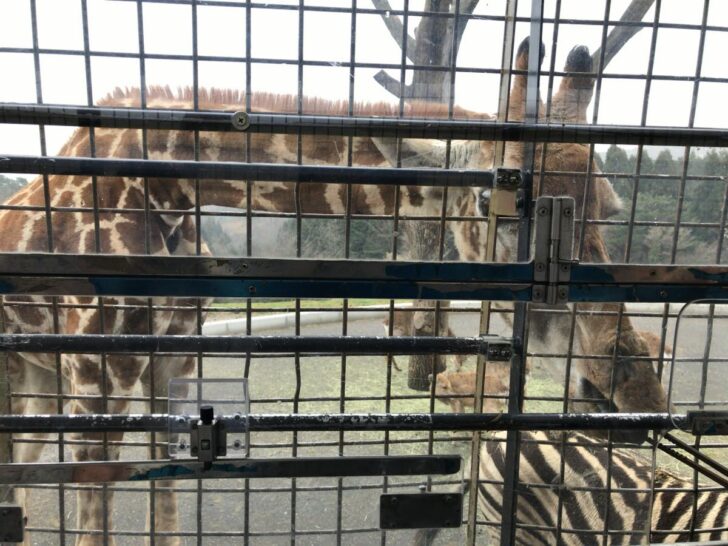
Then, a camel approached us, bouncing along with its humps jiggling.
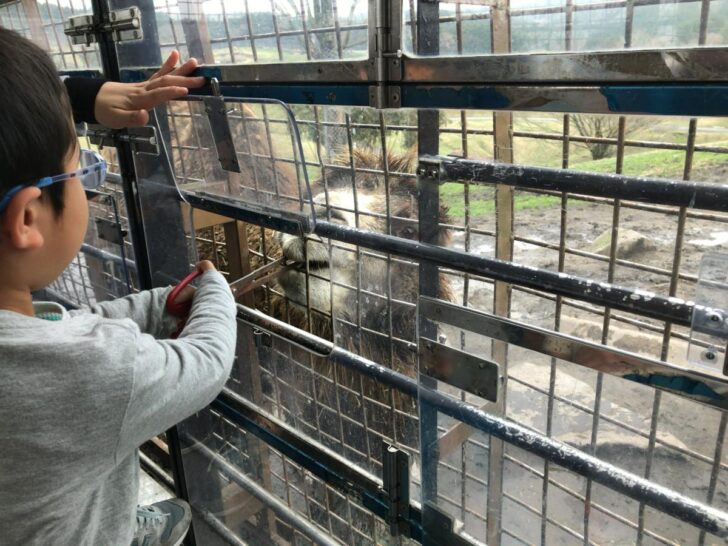
What a perfectly timed shot!
If you hold the food higher up, the animals stretch out, allowing you to see them better.
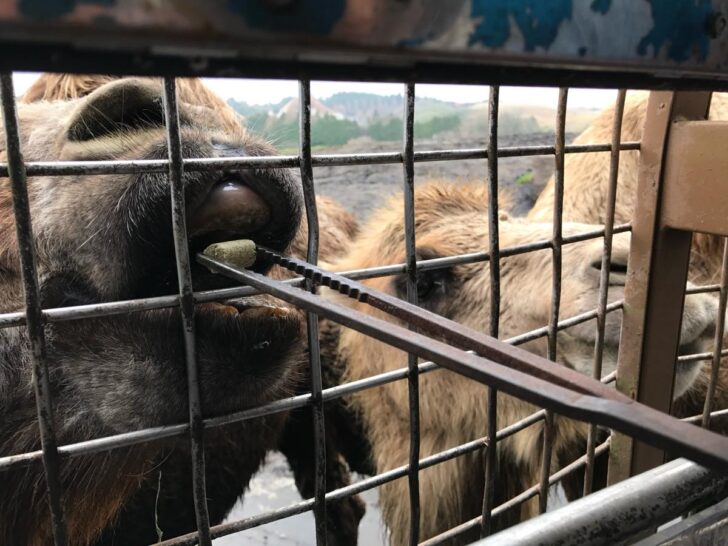
We also saw tigers, cheetahs, antelopes, and hyenas,
getting incredibly close to them.
The Jungle Bus tour lasted 50 minutes, but it felt like it flew by!
It was an unforgettable experience.
Some kids on the bus were a mix of excited and scared,
but overall, it’s a great activity for families.
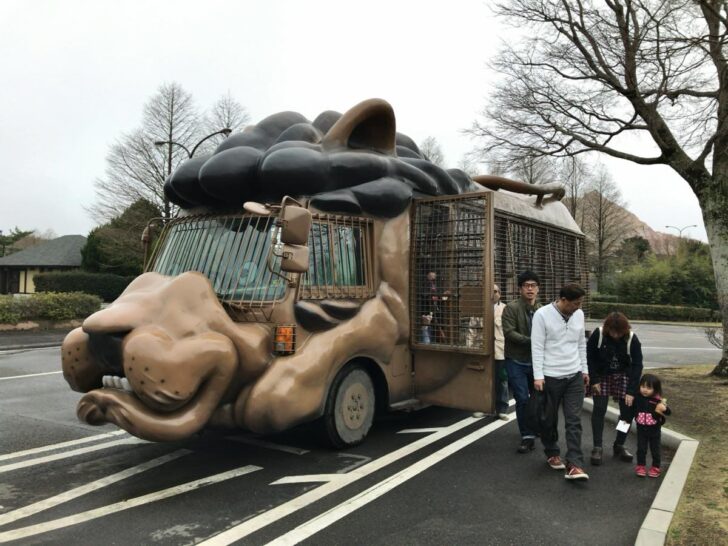
You can also drive your own car inside the park,
but you are strictly forbidden from opening windows or doors,
and feeding the animals is not allowed.
If it’s your first visit, I highly recommend taking the Jungle Bus tour.
More Ways to Interact with Animals
The Jungle Bus is the main attraction,
but there are many other ways to see and interact with animals!
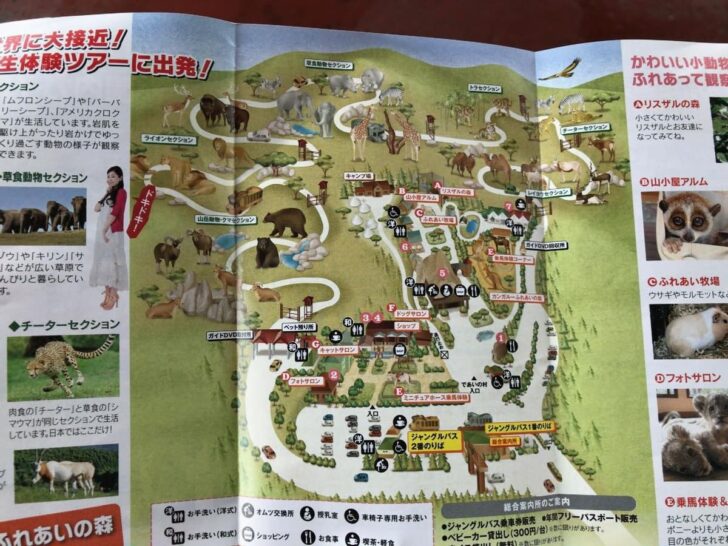
You can pet kangaroos,
which, by the way, feel incredibly soft.
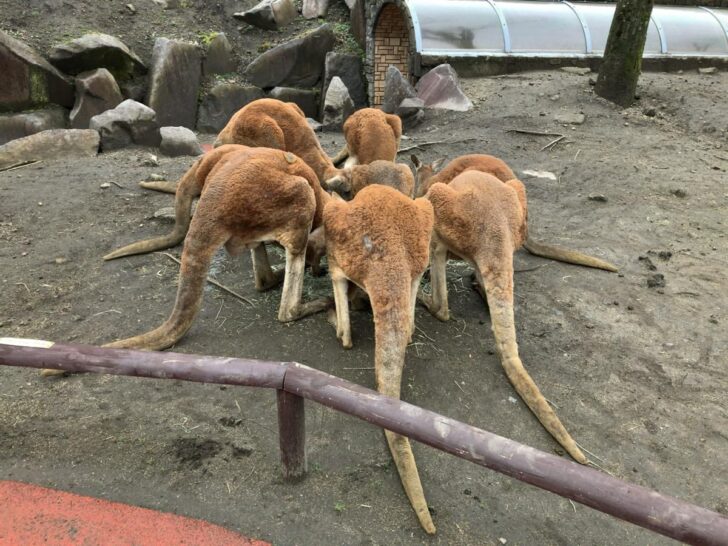
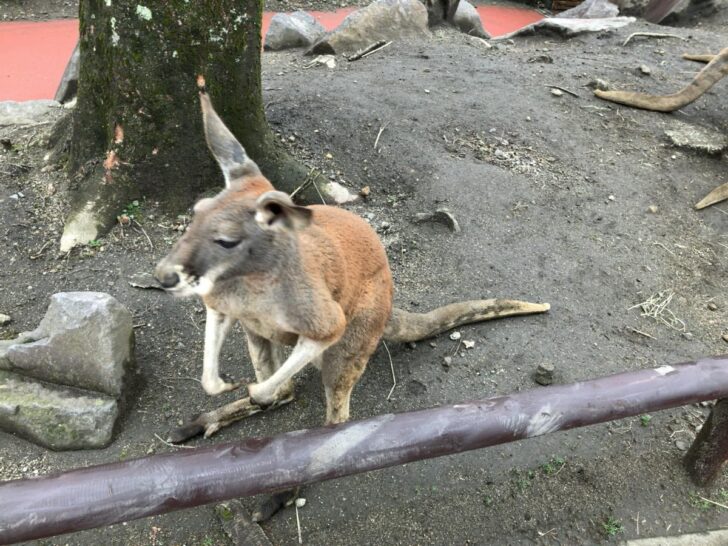
Or feed tiny horses.

At certain times, you can even hold hamsters and hedgehogs.
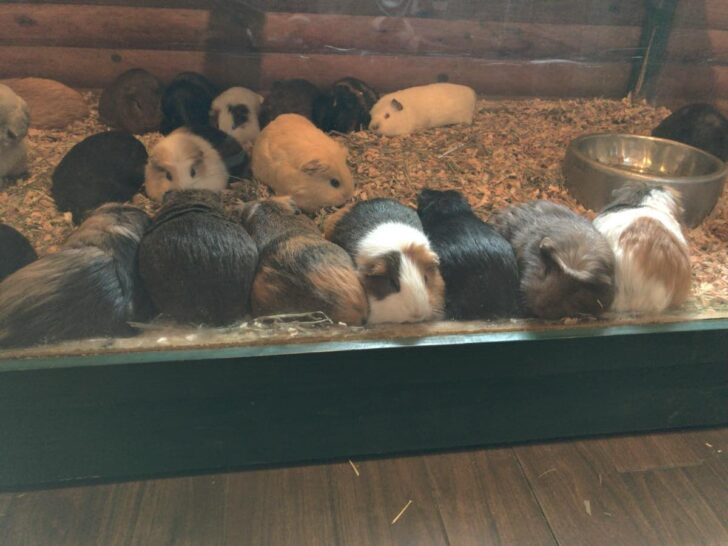
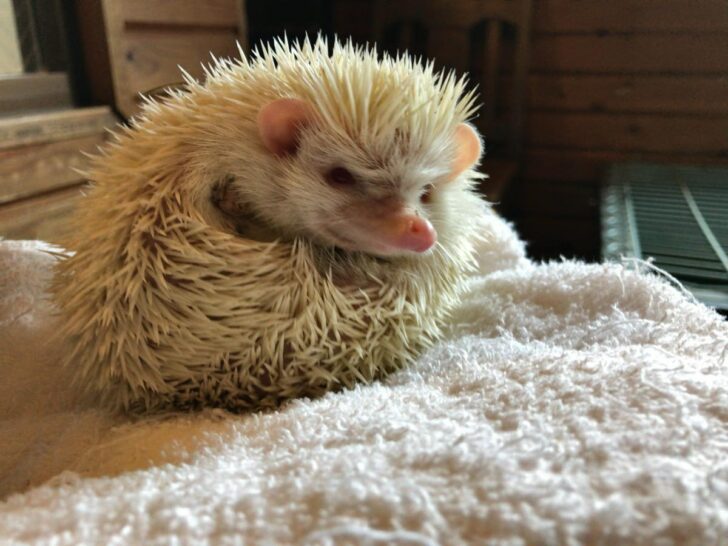
For kids under 30kg, there’s an opportunity to ride a miniature horse and take a commemorative photo.
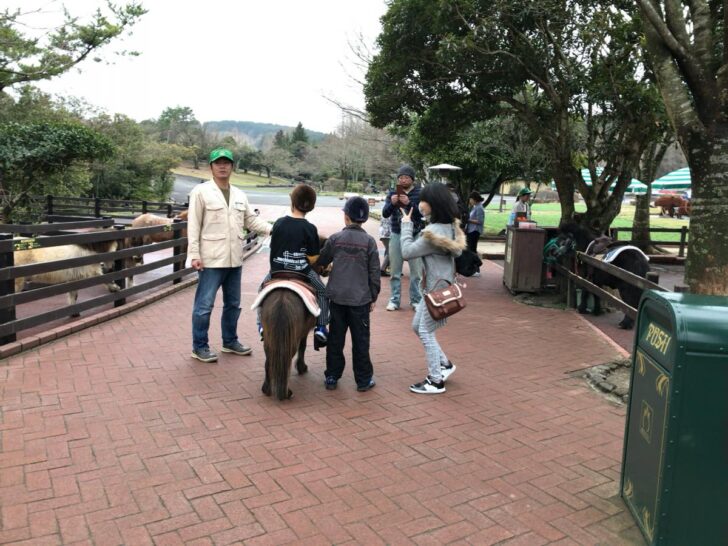
For an extra 300 yen, you can also visit the Dog & Cat Salon.
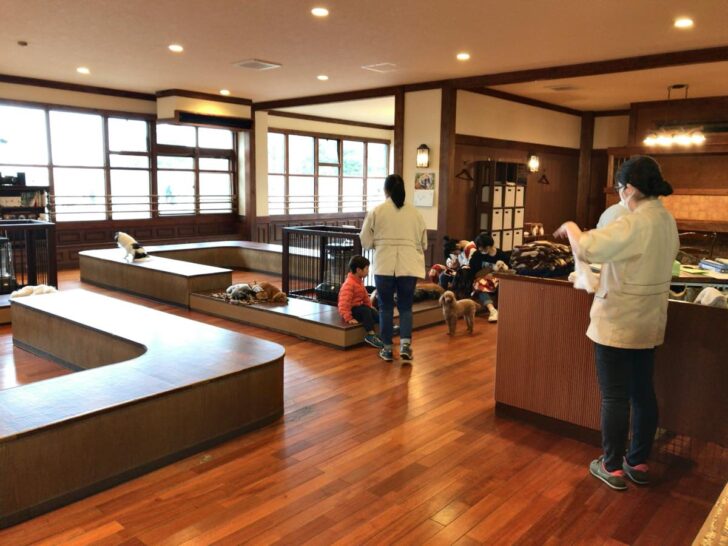
Unexpectedly, I found prairie dogs on display.
Their round butts were weirdly adorable!

There are also souvenir shops and restaurants, so you won’t have any trouble finding a place to take a break.

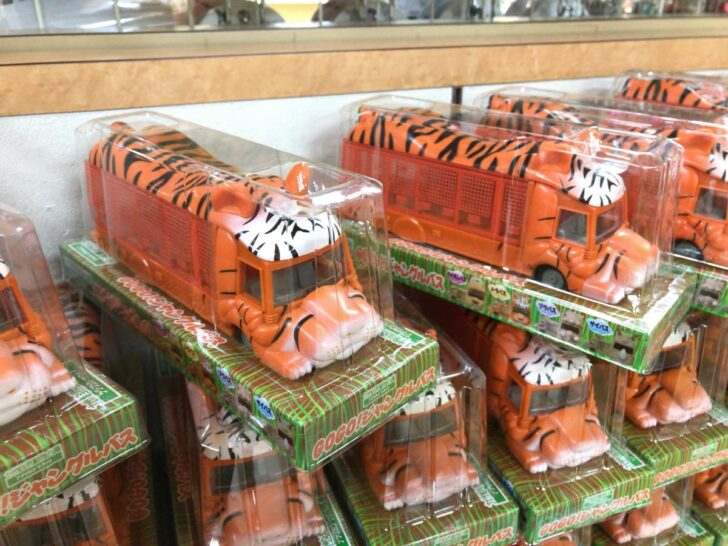
They even had handcrafted animal carvings made in Kenya.
I loved their unique sitting postures, so I bought a mini version as a souvenir!
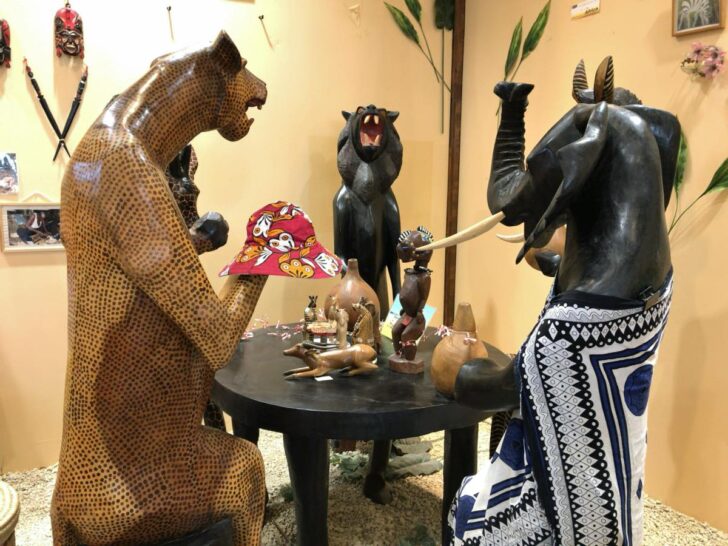
Final Thoughts
I had no idea there was such a spectacular safari experience in Kyushu!
Since it’s fairly close to Beppu, Yufuin, and Aso’s hot springs,
I highly recommend adding it to your Kyushu travel itinerary.
| Facility Name | Kyushu Natural Zoological Park African Safari |
|---|---|
| Phone Number | 0978-48-2331 |
| Address | 2-1755-1 Minamihata, Ajimu-machi, Usa City, Oita Prefecture |
| Opening Hours | 9:00 AM – 5:00 PM (March 1 – October 31) 10:00 AM – 4:00 PM (November 1 – February 28) |
| Closed | Open year-round |
| Website | Official Website: African Safari Twitter: @africansafari1 Facebook: Kyushu Natural Zoological Park African Safari – Facebook |
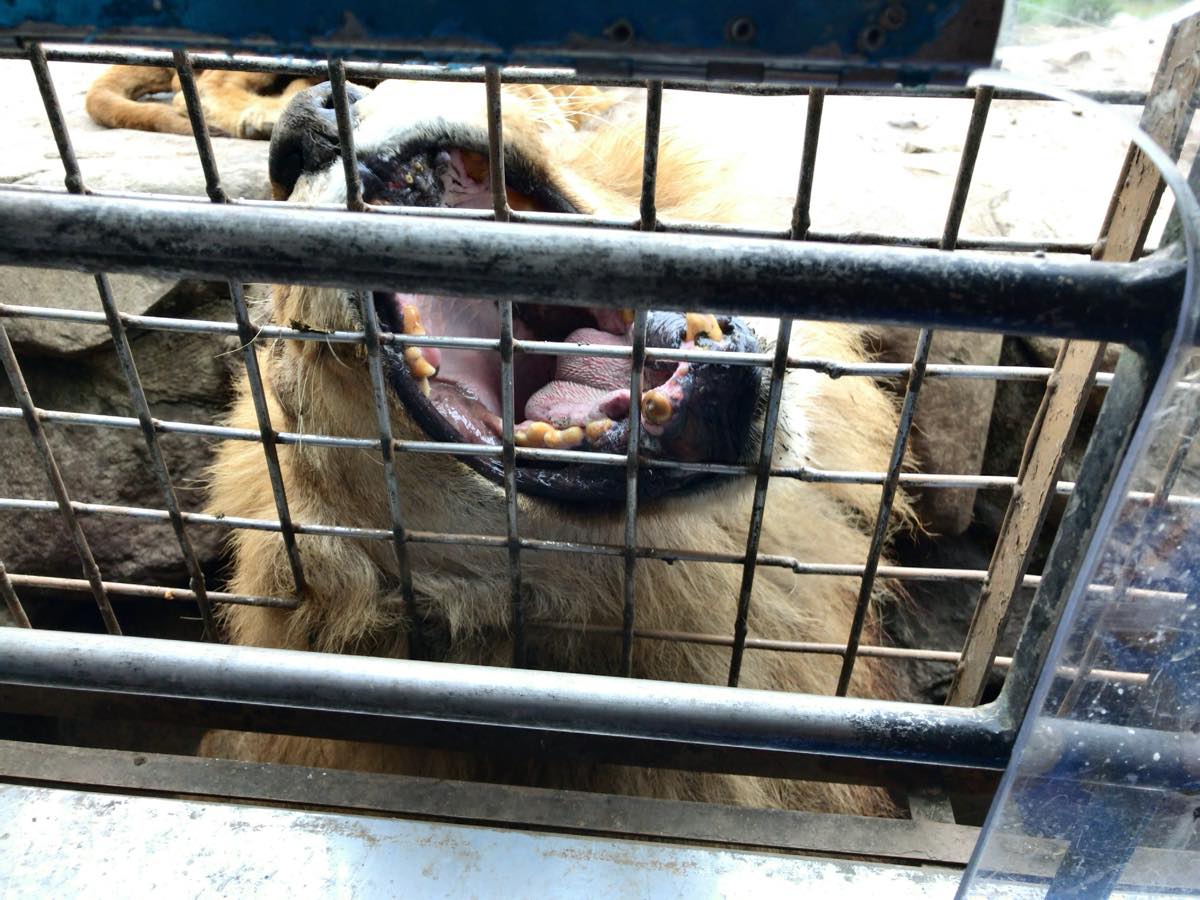

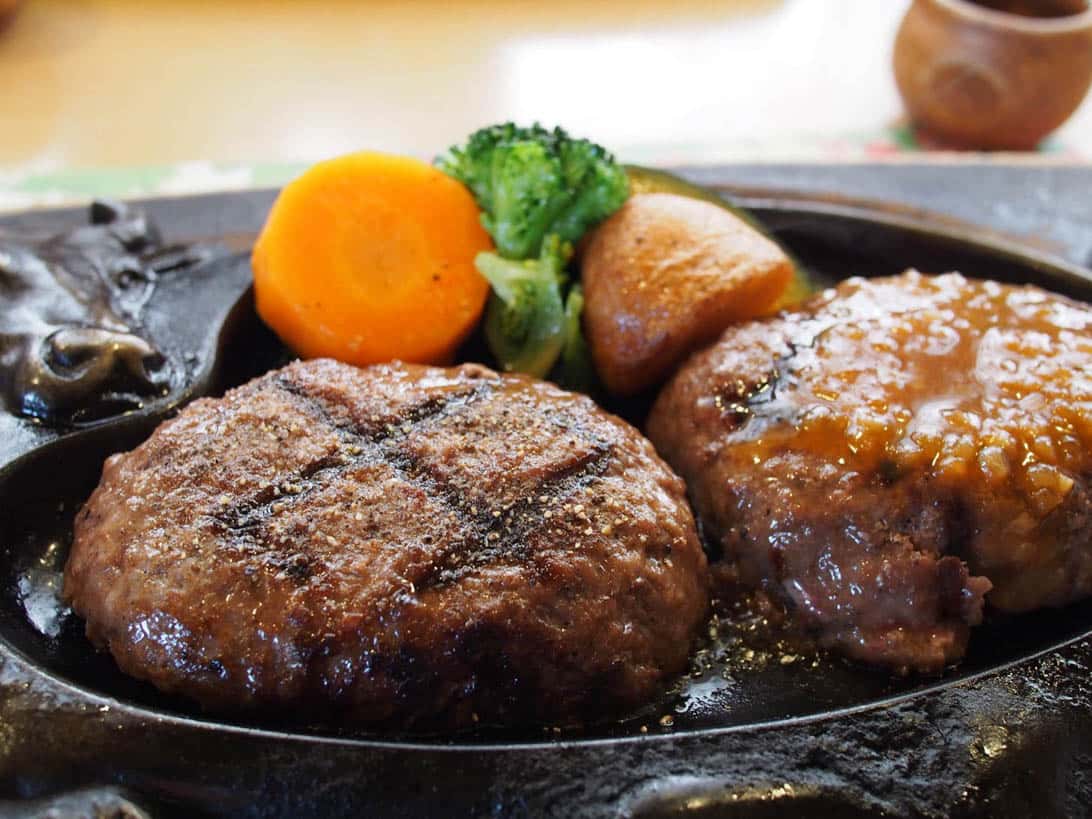
Comments